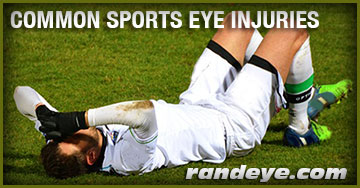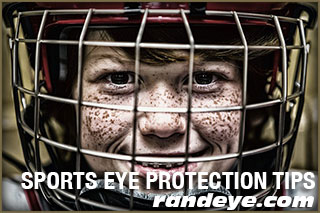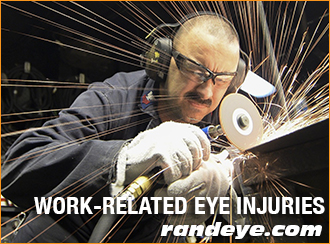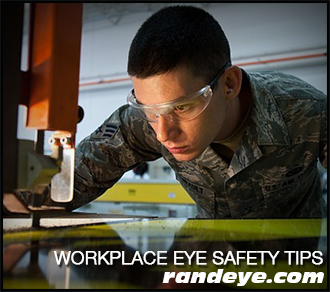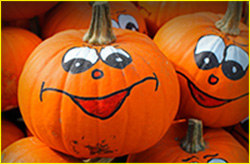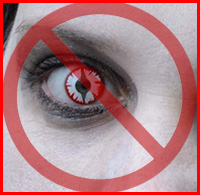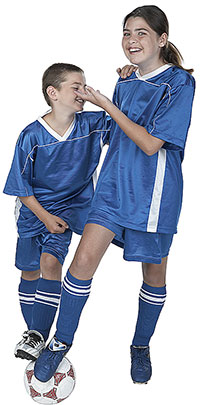Common Sports Eye Injuries
A lot can go wrong in a seemingly simple game of catch! Always keep your eyes on the ball to prevent some of these sport related eye injuries:
Corneal Abrasion:
One of the most common injuries due to sports is a corneal abrasion. An abrasion is a scratch on the surface of the eye. In most healthy patients, an abrasion will heal within 2-3 days. It is still important to see an eye physician treat the abrasion and to prevent infection as well as check your eyes for other injuries.
Traumatic Iritis:
Traumatic iritis is inflammation of the iris. With iritis due to any cause, you can have eye pain, blurred vision, and usually very sensitive to bright lights.
Hyphema:
Another common injury to the eye is a hyphema, which is bleeding inside of the front part of your eye. The bleeding will resolve on its own usually within 1-2 weeks but it can cause other severe eye problems including glaucoma so it is important to see your eye physician and follow instructions carefully if you have this type of injury.
Angle recession:
This is damage to the fluid drainage system of the eye. If there is a significant degree of angle recession, you are at risk for glaucoma, long term.
Retinal tear or retinal detachment:
This type of injury is rare but you are at risk for this for up to one year after any injury. Be mindful of any new flashing lights, floaters or little black spots in your vision or a curtain coming over your vision.
It is important to get your eyes examined if you have any eye trauma or injury to check for the problems listed above so that your eye physician can diagnose and treat before they affect your vision and life permanently.
Sports Eye Protection Tips
How Do I Protect My Eyes While Playing Sports?
The ways in which an unprotected eye may be injured in a sporting event are many. But there are also many ways in which we can protect them. It is especially important that children who are learning to coordinate or who have low skill levels wear protective eye gear. To reduce the risk of a serious eye injury, here are some precautions you should be taking when playing sports.
Baseball. In the event of an errant pitch, a ball lost in the sun or a thrown bat, a baseball player should wear a face-guard made of a sturdy plastic or polycarbonate material along with eye goggles or eye guards.
Basketball. Basketball players should wear eye goggles at all times in the event of an errant elbow, a stray poke from another player’s finger, or even an errantly thrown basketball.
Soccer and football. Like other contact sports, an errant elbow, ball, foot, or finger can cause serious damage to the unprotected eye. Players should wear sports eye guards and, in football, a full faceguard should also be worn.
Hockey. Ever get a good look at a hockey player’s teeth? Imagine such damage to your eyes. Sticks, pucks, and elbows all fly freely during a hockey match, and a player should wear a full polycarbonate material or wire mask to prevent eye and other possible facial injuries.
Tennis or racquetball. To protect your eyes from a ball, or your opponent’s racquet, protective eye goggles should be worn at all times while playing these sport.
Sports Related Eye Injuries
For all age groups, sports-related eye injuries occur frequently. More than 25,000 people are treated for sport-related injuries each year. But there is good news; 90% of these injuries can be prevented!
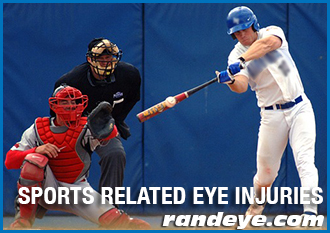 What sports have a risk for eye injury?
What sports have a risk for eye injury?
(Be aware that individual sports have different levels of risk for eye injury)
- High risk: Baseball, basketball, fencing, hockey, lacrosse, racquetball, and softball
- Moderate risk: Badminton, football, soccer, tennis, volleyball, and golf
- Low risk: Bicycling, diving, skiing, swimming, and wrestling
- Eye safe: Track and field and gymnastics
Here are some ways to prevent eye injuries:
- Wear proper safety goggles (lensed polycarbonate protectors) for racquet sports or basketball. In order to be assured that your eyes are protected, it is important that any eye guard or sports protective eyewear are labeled as ASTM F803 approved. This eyewear is performance tested to give you the highest levels of protection.
- Use batting helmets with polycarbonate face shields while playing baseball.
- Use helmets and face shields approved by the U.S. Amateur Hockey Association when playing hockey.
- Know that regular glasses don’t provide enough protection
Eye Injury Treatments
As many precautions as we take, sometimes the inevitable happens. If an injury to the eye does occur, it is important to know what to do in order to prevent any serious problems.
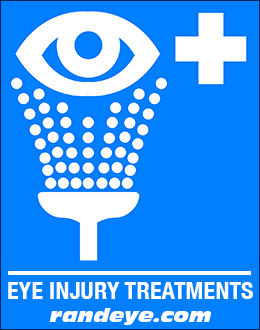
Specks in the Eye
- Don’t rub the affected eye.
- Flush the eye with lots of water.
- See a doctor if the speck doesn’t wash out, or if pain or redness continues.
Cuts, Punctures, and Foreign Objects in the Eye
- Unlike with specks of dust or metal, be sure not to wash out the affected eye.
- Don’t try to remove a foreign object stuck in the eye.
- Seek immediate medical attention.
Chemical Burns
- Immediately flush the eye with water or drinkable liquid. Open the eye as wide as possible. Continue flushing for at least 15 minutes, even on your way to seeking medical care.
- If a contact lens is in the eye, begin flushing over the lens immediately. Flushing may dislodge the lens.
- Seek immediate medical attention.
Blows to the Eye
- Apply a cold compress without pressure, or tape crushed ice in a plastic bag to the forehead and allow it to rest gently on the injured eye.
- Seek immediate medical attention if pain continues, if you have reduced vision, or if blood or discoloration appears in the eye.
Work-Related Eye Injuries – Examples
There is a wide range of ways that you could injure your eyes at your work place. Some are quite obvious, while others occur while you least expect it.
Here are some examples of work-related eye injuries:
Chemical eye burns
Both highly acidic and highly alkaline substances are toxic to the eye and can cause chemical eye burns if they come into contact with the surface of the eye. Alkaline substances present the greatest risk. Such substances are most commonly found in the workplace, for example in laboratory chemicals or industrial cleaning products.
Invasion of foreign bodies
The eye may sometimes get invaded by small foreign particles such as dust from manufacturing activities, which can cause irritation and inflammation. While foreign particles rarely cause lasting damage to the eyes, removal of irritating particles is necessary to avoid permanent eye damage.
Blunt trauma injuries
Blunt trauma injuries (i.e. injuries which do not penetrate the skin and do not result in external bleeding) to the eye occur as a result of being struck by a heavy object. They can cause the eye to bleed internally.
Allergic conjunctivitis
Allergic conjunctivitis is common amongst workers in food handling and agricultural lines of work, who are regularly exposed to particular spices, fruits and vegetables. Excessive exposure to ultraviolet radiation such as sunlight is associated with working in an outdoor industry and also increases risk of allergies.
Eye diseases associated with ultraviolet radiation exposure
Outdoor workers are often exposed to ultraviolet radiation in the form of sunlight in excessive quantities. There are numerous eye diseases and disorders associated with the eyes’ exposure to ultraviolet radiation. Outdoor workers have an increased risk of developing these conditions.
Artificial sources of ultraviolet radiation are also found in a range of workplaces and is also damaging to the eyes. These include welding arcs, germicidal lamps and lasers.
Computer use disorders
Using a computer for extended periods of time is associated with a range of temporary eye disorders including pain and altered vision.
Workplace Eye Safety Tips – Checklist
Eye injuries in the workplace are very common. More than 2,000 people injure their eyes at work each day. About 1 in 10 injuries require one or more missed workdays to recover from. Of the total amount of work-related injuries, 10-20 % will cause temporary or permanent vision loss.
Here’s a quick checklist to help avoid workplace eye injuries:
Workplace Eye Safety Checklist:
Create a safe work environment.
- Minimize hazards from falling or unstable objects.
- Make sure that tools work and that safety features are in place.
- Make sure people know how to use tools properly.
- Keep bystanders out of hazardous areas.
- Evaluate safety hazards.
- Identify the primary hazards at the site.
- Identify hazards from nearby workers, large machinery, and falling/shifting objects.
- Wear the proper eye and face protection.
- Select the right eye protection for the work site.
- Make sure safety eyewear is in good condition.
- Make sure safety eyewear fits right and stays in place.
- Use smart workplace safety practices.
- Always brush, shake, or vacuum dust and debris from hardhats, hair, forehead, or your brow before removing protective eyewear.
- Don’t rub eyes with dirty hands or clothing.
- Clean eyewear regularly.
Most workplace injuries occur where safety eyewear isn’t required, or left up to the individual to decide if they’ll wear it. Many of those injured on the job didn’t think they needed to wear protective gear, or were wearing eyewear that didn’t provide adequate protection. Most work place injuries occur where safety eyewear isn’t required, or left up to the individual to decide on wearing. Many of those injured on the job did not think they needed to wear protective gear, or were wearing the wrong type of eyewear that did not offer adequate protection.
Holiday Eye Safety Tips
The holiday season, as joyous as it is, can be a very dangerous time for your eyes. In order to stay safe this holiday season, you should take the proper precautions to avoid as many accidents as possible. While trips and falls can be common as you are decorating your home, there are many other accidents that may occur.
Here are a few Eye Safety Tips to stay cautious of this holiday season!
The Dangers of Glass Ornaments
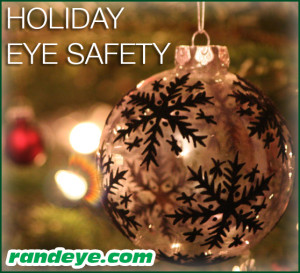 Glass ornaments can be a beautiful addition to liven up your family’s Christmas tree, but these fragile items can be broken instantly and easily, causing small fragments to fly everywhere. When cleaning up these shards of glass, betake caution in protecting your eyes. Wearing gloves and washing your hands after clean up will help prevent foreign objects from getting into your eyes. Keep children away from broken shards of glass.
Glass ornaments can be a beautiful addition to liven up your family’s Christmas tree, but these fragile items can be broken instantly and easily, causing small fragments to fly everywhere. When cleaning up these shards of glass, betake caution in protecting your eyes. Wearing gloves and washing your hands after clean up will help prevent foreign objects from getting into your eyes. Keep children away from broken shards of glass.
If you do get glass or any other foreign object stuck in your eye, washing it out with a saline solution or clean water. Refrain from rubbing your eyes. Call your eye doctor in the case of an emergency.
Christmas Lights, Wreaths and Trees
Hanging up decorative lighting may be fun, but there are also dangers that come along with it. Climbing up ladders or any other unstable surfaces carries the risk of falling and poking an eye.
Pine needles found on wreaths and trees can also pose as a threat to the eye.
If you do get poked in the eye, examine it in a mirror to check for fragments and call your optometrist.
Popping up the Champagne!
The holidays call for social gatherings and celebrations. For adults, always remember eye safety when popping up the champagne bottles. When it’s time to open the bottle of champagne, hold the cork down when you’re removing the wire wrapped around the cork. A great way to prevent the champagne from spraying or cork flying is to use a towel and point it away from yourself and others. Once you’re finally ready, hold the bottle at about a 45-degree angle and gently pull the cork out. Following these steps will prevent any injuries!
Holiday Toy Safety Tips
The holiday season is upon us! As we gather with friends, family and loved ones, creating a safe environment for celebrating is key in scoring a very happy holiday.
Did you know that each holiday season, toys and sporting equipment are responsible for thousands of eye injuries to children every year? These eye injuries are preventable; parents can keep their children safe by demonstrating the proper use of toys, purchasing age-appropriate toys and supervising them while in use.
Safe Toy Checklist & Purchasing Tips:
- Read all warnings and instructions.
- Make certain children wear appropriate eye protection for sports (face shields, helmets).
- Avoid toys with sharp or rigid points, spikes, protruding or projectile-firing parts.
- Inspect toys for safe, sturdy construction. Children’s toys should be durable and able to withstand impact.
- Look for the letters “ASTM which means the toys meets the national safety standards set by the American Society for Testing and Materials (ASTM).
- Repair or replace damaged or defective toys.
- Stray away from purchasing flying toys. Bows, arrows, slingshots, and darts are extremely dangerous.
- BB guns are not toys and should not be given to children.
- Keep toys intended for older children away from younger children.
Do not give toys with small parts to young children. They tend to put them in their mouths, increasing the risk of choking.
Halloween Eye Safety Tips
Halloween is a great time to dress up and enjoy the night with friends and family, but every year, hundreds of adults and children are treated in emergency rooms because of eye-related injuries. These injuries can be prevented by following some of our easy tips and ensure a fun and safe Halloween..
HALLOWEEN EYE SAFETY TIPS:
-
Never buy cosmetic contact lenses without a prescription from an eye care professional, because it is both illegal and dangerous. Improper use of cosmetic contacts can result in serious eye conditions including bacterial infections, swelling, eye pain, sensitivity to light, pink eye and loss of clarity.
-
Avoid pointed props such as swords, spears or wands, which can be a danger to children’s eyes.
-
When using makeup or face paint, be sure that it is hypoallergenic to avoid undue reaction around your eye. Don’t paint eyebrows or eyelashes, because sweating can cause the paint to drip into your eye.
-
Make sure your mask or accessories fit properly and do not obstruct or block vision.
-
Carry a flashlight to illuminate dark paths and walkways. Daytime trick or treating is always a safer option.
Rand Eye Institute wishes everyone a thrilling Halloween weekend. Stay safe!
Children’s Eye Injuries
Children are prone to injuries, whether it’s a scraped knee or bruised elbow. Eye injuries, in particular, are extremely dangerous and very avoidable. When children participate in sports, recreation, crafts or home projects it is important for them to know eye safety practices and use the appropriate protective glasses. Here are some tips to keep your child away from eye-related injuries.
- Children should wear sport eye protectors, made with polycarbonated lens when playing.
- All chemicals and sprays should be kept out of reach of small children.
- Be a role model for your child and use approved eyewear during potentially dangerous yard work and household repairs and projects.
- Avoid projectile toys such as darts, bow and arrows and missile firing toys.
- Look for toys that are marked “ASTM”, which means the products meets the national safety standards set by the American Society for Testing and Materials.
- Do not allow your children near fireworks, especially bottle rockets. An adult should always handle fireworks.
- Make sure children are properly secured in baby carriers or safety seats while on the road. Children under the age of 12 should never ride in the passenger seat. Store all loose items, as any loose object can become a dangerous projectile in the case of a crash.

